Beating the Tests with
Powerful Questioning, Good Intelligence and Right Thinking
 |
Digging to China.
Making up your own mind.
Digging for answers
but also building your own answers
by collecting and considering good intelligence - pertinent facts, clues and evidence - when answers are not easily found,
are not satisfying, and need improving.
|
These skills prepare young ones for the tests of life
as well as the tests of Texas, Colorado, Arizona, Oklahoma and the good old USA.
|
| 1. The Research on Proficient Readers and Strategic Reading
What do we know?
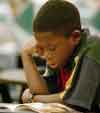 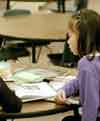 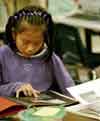 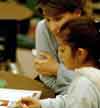
Students in Grand Prairie ISD (TX) reading to answer questions from their Wonder Boxes.
|
1. Proficient readers use the following strategies:
- Inferring
- Questioning
- Picturing
- Recalling prior knowledge
- Synthesizing
- Flexing
This list is a synthesis of strategies identified by P. David Pearson in his research on reading comprehension in the 1980s, work cited by Stephanie Harvey in Nonfiction Matters: Reading, Writing and Research in Grades 3-81
|
| 2. Less proficient readers can be taught to apply these same strategies with good success if teachers employ effective pedagogy to model those strategies for their students and provide ongoing challenging practice in their use. |
| 3. We can improve student reading performance, especially in the area of comprehension, by making sure that every teacher from K-12 is well practiced in strategic reading pedagogy. |
| 4. Many teachers have not been given adequate professional development support to learn strategic reading pedagogy. |
| 5, We must provide adequate professional development support for all teachers to learn strategic reading pedagogy. |
| 6. Scores on demanding test items are unlikely to improve much unless we provide this professional development. |
| 7. A brief six hour online class in strategic reading pedagogy is a good start for any teacher K-12 to begin acquiring a repertoire of strategic reading instructional approaches especially when followed by study groups and guided reading.2 |
| 8. Effective teaching in this domain requires judgment, experimentation and a broad repertoire while heavily scripted approaches relying upon the memorization of patterns can undermine student performance. |
|
| 2. Elaborating on Inferring - Reading Between the Lines
When they are clue-less,
how do we teach our students to find what is missing or what is implied?
|
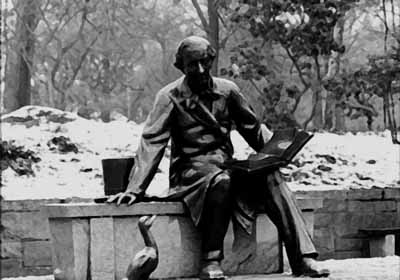
We give them many chances to interpret material where they must create an answer by considering the clues or the evidence provided.
We lead them through the thought process.
We ask them to practice with pictures, with reading passages and with numbers.
Examples (click here)
|
|
| 3. Elaborating on Questioning
How do we teach our students to be serial questioners?
|
 We do not give students enough practice forming questions to figure out a mystery. We focus too much on single question/response pairs, with the teacher asking the question, the student finding and spitting back an answer. We do not give students enough practice forming questions to figure out a mystery. We focus too much on single question/response pairs, with the teacher asking the question, the student finding and spitting back an answer.
When answers are not directly stated, the reader must try a series of questions until the answer is evident. It is less about finding and uncovering than building.
One pulls and tugs at the clues with questions. It is like untangling a snarled fishing line. Making sense out of nonsense. Creating meaning where none shines through.
A student needs a questioning toolkit - a conscious awareness of different types of questions and their differing functions. We teach them types of questions from the earliest age so they can reach into their toolkit or toolbox and grab a saw when they need a saw, a hammer when they need a hammer and a drill when they need a drill.
As the old folk saying goes, if your only tool is a hammer, then every problem becomes a nail.
How do we teach them this questioning process?
- We introduce them to question types.
- We give them practice using each question type.
- We confront them with challenges that require question combinations.
- We surprise them with challenges they have never seen before.
- We make surprise and wonder a daily event.
- We teach them persistence, resourcefulness and inventiveness.
- We give them practice mapping out questions before they actually gather information or read passages.
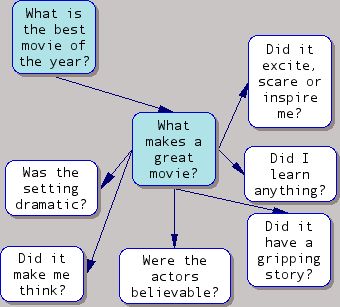
Examples (click here)
The Questioning Tool Box - Activities to strengthen student questioning skills (click here) http://questioning.org/toolbox.html
A Questioning Toolkit (click here) http://questioning.org/Q7/toolkit.html
The Great Question Press (click here) http://questioning.org/questionpress.html
The Technology of Questioning (click here) http://questioning.org/qtech.html
|
|
| 4. Elaborating on Picturing
How do we teach our students to make powerful use of their mind's eye?
|
 We make students aware of the screen some folks call "The Mind's Eye" and we give them practice calling up images. We make students aware of the screen some folks call "The Mind's Eye" and we give them practice calling up images.
We read stories with vivid description aloud and ask students to picture what they have heard.
We show students how to map out their own ideas and searches.
We ask students to convert passages by other writers into mind maps.
We show students how to view long articles as clusters of ideas.
Examples (click here)
|
|
| 5. Elaborating on Synthesizing
How do we teach our students to mix, match, combine
and weave ideas into something new?
|
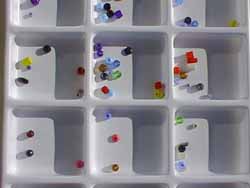
We can employ metaphors that make the process of synthesis seem less abstract and elusive.
- Beading - Synthesis involves changing things around like beads on a string to create variations, value and novelty.
- Puzzling - Synthesis is the combining and re-combining of fragments and elements so that something new is formed. Jigsaw puzzles can help to visualize this process.
- Cooking an Omelette - Synthesis may involve substituting or alternating ingredients (ideas) as well changing the sequence, timing or intensity (spice).
- Fabricating - Manufacturing often requires the combining of raw materials or parts in novel ways.
- Inventing - Synthesis often involves changing something around to create a new and different version but it can also mean starting from scratch to build something entirely novel.
- Weaving - Synthesis requires that we sort out the threads of meaning in ways that a pattern emerges.
We can give students practice with pairs of such tasks, asking how synthesis in one setting (cooking the omelette) might inspire good thinking about synthesis in writing.
We can give students practice with models that teach synthesis strategies:
- SCAMPER (Eberle, 1997) - Each letter stands for a strategy (S = substitute, C = combine, A = adjust, M = modify, magnify, minimize, P = put to other uses, E = erase or eliminate, R = reverse). You can learn more about this approach at Amazon (click here).
- The Six Traits Approach to Writing - In this approach to finishing a writing project, the writer considers how improve writing by reviewing each of the following and making changes:
• Ideas and Content
• Organization
• Voice
• Word Choice
• Sentence Fluency
• Conventions
- For more on this approach go to http://fnopress.com/start/mod8.html.
We can ask students to work on solving problems from their own times or from history, putting them in role playing situations that require them to investigate and propose smart ways of handling issues or challenges.
We can ask students to come up with new titles for stories, poems, paintings, songs, businesses or schools.
We can ask students to write ads, slogans, letters to the editor, complaint letters, jingles and songs.
We can ask students to express deep feelings with the help of the fine arts.
|
|
| 6. Elaborating on Flexing
How do we teach our students to try lots
of different strategies and approaches
when facing a thinking challenge?
|
We make sure students understand the value of thinking about thinking, the dangers of getting stuck in a rut, and the worth of versatility.
We give them lots of practice with baffling predicaments, quandaries and dilemmas as well as puzzles, conumdrums and mysteries instead of restricting them to canned problems with pat answers.
We teach students that frustration is a natural and common phase in the creative process.
We build their tolerance for frustration and their taste for ambiguity.
|
|
| 7. The Daily Test
How do we make sure our students can enjoy
these kinds of challenges on a daily basis?
|
We make this kind of reading for meaning a priority across all subject areas, stated clearly in curriculum guides.
We allocate some time every day in every class for these kinds of challenges.
Some of these challenges are presented orally. At other times we present the challenge in a format similar to the testing formats employed by demanding state tests.
We work on our students' attitudes toward stressful testing, teaching them the testing game - ways to beat the tests by reading questions before reading passages, by eliminating obviously wrong answers and using common sense.
We employ "curriculum compacting" - a strategy from Renzulli that reduces the time devoted to busy work and trivial pursuit so that teachers and students have time to wrestle with essential questions and demanding tasks.
|
|
| 8. The Professional Development Package
How do we give teachers the support and learning
opportunities they need to make this all happen?
|
We make sure that every teacher K-12 has the opportunity to enjoy at least a six hour introduction to the basic tenets of strategic reading.
We buy teachers books that show how to bring strategic reading to life in their classrooms (see below).
We encourage the growth of study groups and support teams so that teachers can continue to deepen and extend their reading skill repetoires.
We purchase supplemental reading materials that require the kind of strategic reading outlined in this guide.
We avoid heavily scripted reading programs that rely too heavily upon memorization of patterns and recipes.
We cultivate professionalism and show great respect for the importance of pedagogy.
|
|
| Foot Notes
1. Stephanie Harvey cites the following works by P. David Pearson and others:
- "The changing face of reading comprehension Instruction." The Reading Teacher, 38 (August, 1985), 724-738. P. David Pearson.
- "The instruction of reading comprehension." Contemporary Educational Psychology, 8 (1983), 317-344. P. David Pearson and Margaret C. Gallagher.
- "Developing expertise in reading comprehension." What Research Has to Say about Reading Instruction, edited by J. Samuels and A. Farstrup. 1992, Newark, DE: International Reading Association. P. David Pearson, L.R. Roehler, J.A. Dole, and G.G. Duffy,
- His most recent book is Teaching Reading: Effective Schools, Accomplished Teachers by Barbara Taylor (Editor), P. David Pearson (Editor) Lawrence Erlbaum Assoc; (April 2002) ISBN: 0805841342.
2. Examples of excellent texts to support the development of strategic reading pedagogy:
- Primary Grades
- Mosaic of Thought : Teaching Comprehension in a Reader's Workshop by Susan Zimmermann (Author), Ellin Oliver Keene (Author) Publisher: Heinemann; (April 21, 1997) ISBN: 0435072374
- Reading With Meaning: Teaching Comprehension in the Primary Grades by Debbie Miller. Publisher: Stenhouse Pub; (April 2002) ISBN: 1571103074
- Intermediate and Middle Grades
- Strategies That Work: Teaching Comprehension to Enhance Understanding by Stephanie Harvey, Anne Goudvis. Publisher: Stenhouse Pub; (February 2000) ISBN: 1571103104
- Nonfiction Matters: Reading, Writing, and Research in Grades 3-8 by Stephanie Harvey Publisher: Stenhouse Pub; (June 1998) ISBN: 1571100725
- Improving Comprehension With Think-Aloud Strategies : Modeling What Good Readers Do by Jeffrey D. Wilhelm. Scholastic Professional Books; (October 1, 2001) ISBN: 0439218594
- Secondary Students
- I Read It, but I Don't Get It: Comprehension Strategies for Adolescent Readers - Cris Tovani, Ellin Oliver Keene; Stenhouse Pub; (October 2000) ISBN: 157110089X
|
| © 2004, FNO Press, all rights reserved. |






 We do not give students enough practice forming questions to figure out a mystery. We focus too much on single question/response pairs, with the teacher asking the question, the student finding and spitting back an answer.
We do not give students enough practice forming questions to figure out a mystery. We focus too much on single question/response pairs, with the teacher asking the question, the student finding and spitting back an answer.
 We make students aware of the screen some folks call "The Mind's Eye" and we give them practice calling up images.
We make students aware of the screen some folks call "The Mind's Eye" and we give them practice calling up images.